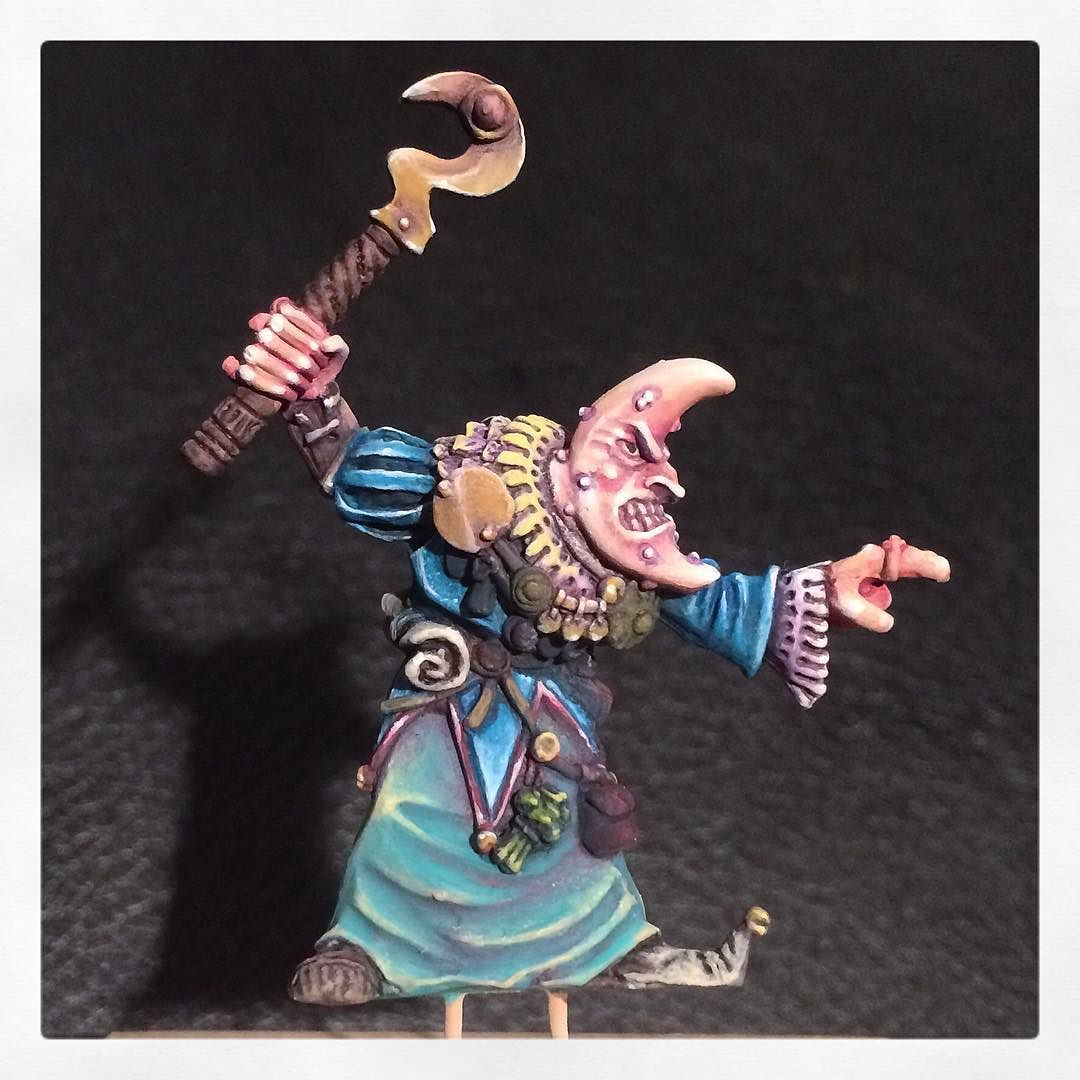I've painted my first Trollslayer. Aaaaaaaaaaaaaaaaaaaaaaaaaaaaahhhh!
Allow me a bit of hype. Not only it is a nice miniature, but it is also an iconic one - and thanks to Hobgoblin Orange blog for the mine of information about it.
This is not only a Trollslayer, but the very first Slayer in the history of Slayers. A first stub of the idea nehind Slayers already emerged in the Magnificent Sven scenario published in 1984, where in the infamous Packet Inn of Iquitos (in Lustria) one would find Juggo Joriksonn, a Dwarf Berserker covered in tattoos and affected by alcoholism and frenzy.
His most striking features are his sunken, bloodshot eyes and his awful complexion. He is in the habit of dyeing his hair torquiose [sic] and greasing it with pig fat. Its spiked and sticks out at surprising angles.
 |
| Juggo Joriksonn by Aly Morrison |
In 1985 Citadel launched the Dwarf Lords of Legend Box which included, among others, a miniature obviously inspired to Juggo and Dwarf Bersekers: Kimril Giantslayer. The Perry Twins made an excellent job (as usual) with these miniatures, and Kimril somehow struck a chord.
 |
| Cover by John Blanche. Kimril second row left. |
In 1986 WFRP was published, and here the concept of Slayer was first detailed with their belief in atoning shame with a honourable death:
Troll Slayers can be recognised easily by their hair, which is spiked and dyed orange, and by the many tattoos which cover their bodies. They also favour exotic jewellery, such as earrings and nose plugs. They spend a great deal of their time boasting of their exploits and showing off their many scars, and often indulge in bouts of overeating, fasting, and excessive consumption of stimulants.
Those who did not find death as Troll Slayers could eventually become Giant Slayers, or Slayers of whatever monster their obsessions would pick.
Troll Slayers became instant classics, thanks also to the cover made by John Sibbick for WFRP.
The rest, as they say, is History.
 |
| Charging here... |
 |
| Charging there... |
 |
| MORGRIM NO! |
























